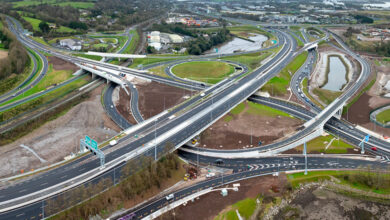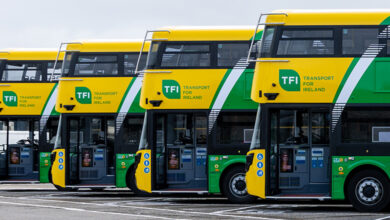Future of land transport
Laura Behan outlines the Strategic Framework for Investment in Land Transport (SFILT)’s main findings.
As Head of the Economic Evaluation Unit at the Department of Transport, Tourism and Sport, Laura Behan has overseen the preparation of the Strategic Framework for Investment in Land Transport (SFILT) – effectively a foresight study about Ireland’s transport investment needs for the next 25 years. With the hiatus in investment after the 2008 crash, the department decided to consider the level of land transport investment which Ireland needed and how to prioritise that in order to support economic development.
“A well-performing transport system is essential to the functioning of society and the economy,” Behan comments. Positive returns on investment depend very much on selecting the right projects and investment is most effective when tackling the main constraints in the system. Land transport capital formation peaked at almost 1.7 per cent of GDP in 2008 but fell to 0.72 per cent in 2012. Investment is cyclical and present funding levels are at an historic low, having last reached that point in the late 1980s. Restoring transport investment levels to our historic long-run average of 1.1 per cent to 1.15 per cent of GDP would equate to an annual investment of over €2 billion, based on 2014 GDP.
An average household spends €116 per week on transport: 14 per cent of weekly spend. Transport-related taxes are also a strong income stream for the Exchequer (currently €4.4 billion per annum). Annual Exchequer investment in land transport currently totals €1 billion. Another €300 million in investment is funded from other sources including toll receipts.
Current investment levels risk eroding the important improvements in competitiveness that have been achieved. The department “conservatively” estimates that a total of €1.6 billion per annum is needed to maintain just to maintain the existing transport networks in an adequate condition and has looked at how this requirement could be reduced.
The scope for efficiency savings is limited although “any scope – however limited – must be fully exploited.” Reducing performance levels and the size of the funded network would be problematic and would present challenges in the medium to long term. This option, though, could save €100-200 million per annum.
The work also considered the growth in transport demand between 1990 and 2008. The number of people travelling to work almost doubled and car ownership increased from 800,000 to 1.9 million. The majority of new investment went into the new motorway network and – aside from Luas – very little went into public transport.
Demand has stabilised since 2008 but signs of growth are now returning. “The road network meets the overwhelming majority of travel need in Ireland, catering for cars, buses, commercial vehicles, cycling and walking,” Behan explains. Car dependency will remain dominant for some time into the future but growth in demand is unlikely to be as rapid as it was before the recession.
A conservative population growth scenario up to 2041 – 5.2 million population and 7 per cent unemployment – would result in an estimated 35 per cent increase in commuting trips. This implies a minimum of 650,000 additional daily trips to and from work. Behan stresses: “The existing land transport system can’t cater for this increase in transport demand and without investment to cater for it, our main urban centres will become severely congested.”
SFILT’s overarching imperative is to restore transport capital funding to 1-1.15 per cent of GDP per annum but this will need to be above those levels to catch up after the recent under-investment. The first priority for any investment available should be to maintain the steady state.
Tackling urban congestion comes second and this is where any additional capacity must be put in place i.e. to improve the public transport, cycling and walking infrastructure. Any remaining funding must be used to optimise existing networks, by improving connections to ports, airports and large-scale proposed employment investments and also to deliver on national and regional spatial planning priorities.





